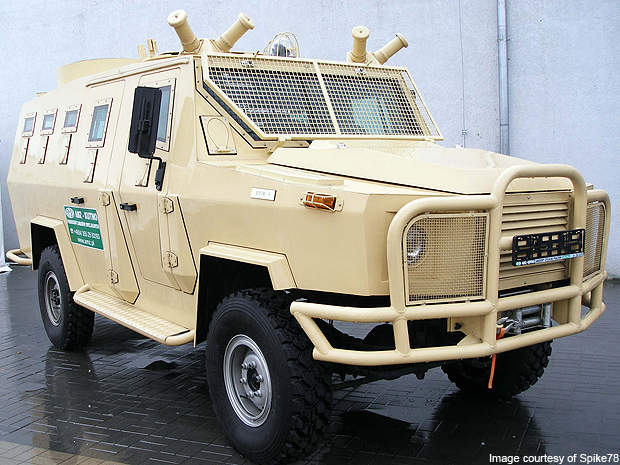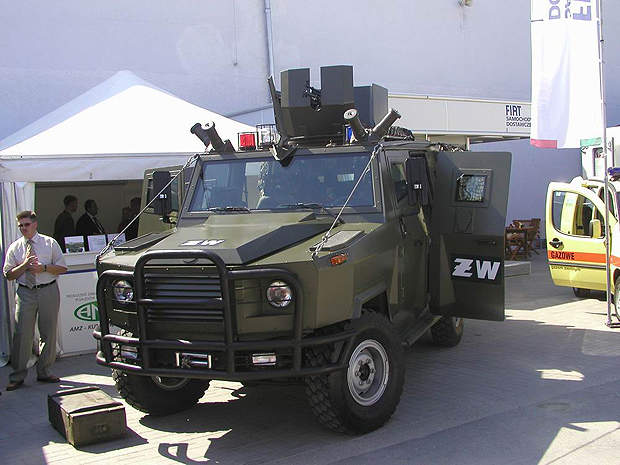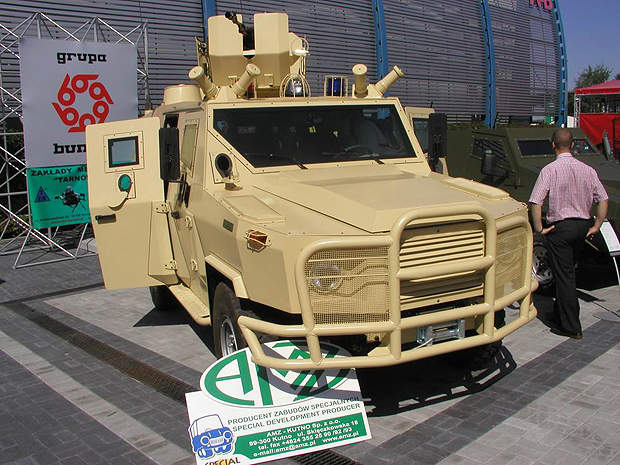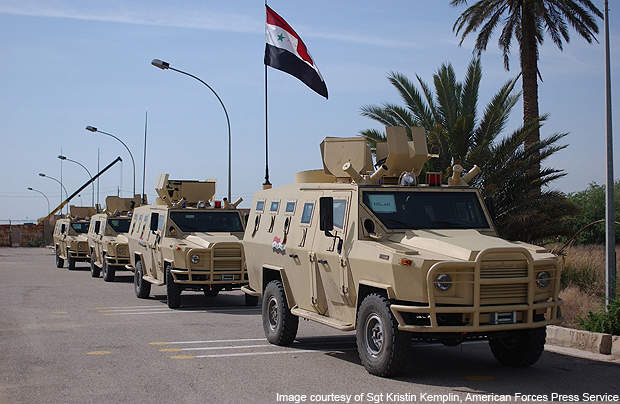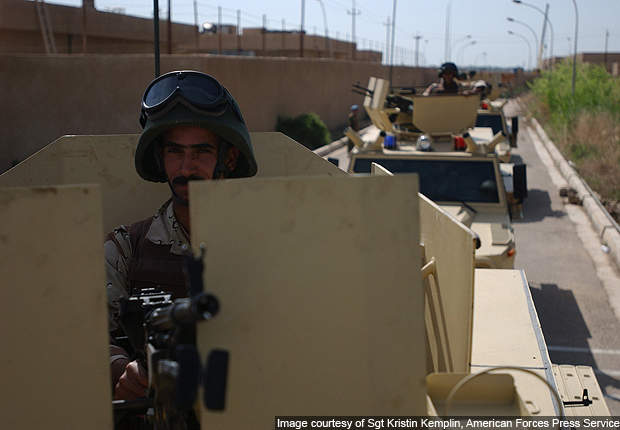
The Dzik multirole armoured infantry mobility vehicle
Dzik is a multirole infantry mobility vehicle manufactured by AMZ-KUTNO. It can be deployed as an armoured personnel carrier in patrol and intervention operations by military and police forces.
The vehicle first entered service with the Polish Army in 2004. It also serves in the Iraqi Army as Ain Jaria-1. Customers from the Far East, South America and the Middle East have also expressed an interest in variants of the vehicle.
Dzik design and features
The Dzik vehicle is based on the SCAM S55/62 chassis. The body structure is reinforced with welded steel plates. The rear part of the body serves as a roof rack; the front is shaped to negotiate barriers and obstacles on roads. All doors feature bulletproof visors and extra visors are located on either side of the rear door. Closed loopholes are provided in the side doors and rear bodywork.
Headlights and turn signals are housed in a steel enclosure, and an electric lift winch is attached to the front bumper.
Dzik is fitted with a towbar, and air conditioning and filtering equipment. Space is provided between the seats for supplies and equipment. Racks are available on both sides of the rear door and the rear wheels for mounting accessories. In addition to the eight people the vehicle can carry payloads of up to 400kg to 500kg.
Orders and deliveries
The Polish Ministry of Interior procured Dzik-AT vehicles to replace its BTR-60 APC. It is used as a basic anti-terrorist vehicle by Polish forces. Dzik-2 vehicle deployed by the Polish Military Police is called Gucio.
In June 2005, the Iraqi Ministry of Defence placed an order with AMZ-KUTNO for 600 Dzik-3 vehicles. All the deliveries were concluded by 2008.
Dzik mission variants
Dzik is produced in four main variants based on the same chassis. Dzik-AT (anti-terrorist) features three doors and ten firing ports, and accommodates up to eight people. Dzik-2 is a five door variant with eight firing ports and a rotating machine gun turret on the roof. Dzik Cargo, with two doors and two firing ports, provides space for up to three people and a cargo hold.
Dzik-3 has four doors houses up to 11 troops. This variant features 12 firing ports, a machine gun turret and two double smoke grenade launchers. Dzik-3 comes in serial and commander versions. The first is equipped with a basic on-board communications system, while command trucks are equipped with radio KF and air-conditioning system. Other custom-built variants such as ambulance and anti-aircraft vehicles are also produced.
Armament
The PK machine gun using 7.62×51 Nato cartridge is the primary armament mounted on a rotatable platform on the roof of the vehicle. Alternatively, an NSV 12.7mm-calibre heavy machine gun using 12.7×107mm or 12.7×99mm Nato cartridges can be mounted on the vehicle. The three blocks on the roof are fitted with two double smoke grenade launchers.
Self-protection
Dzik is equipped with B6 class armour to protect the crew compartment against 7.62mm-calibre weapons, fragmentation artillery shells, hand grenades and anti-personnel landmines.
Windows are fitted with BR6 NS bulletproof glass. The engine compartment is protected by a mechanical or automatic fire extinguishing system.
Engine
The vehicle is powered by Iveco AIFO SOFIM 8140.43N common rail direct injection, turbocharged engine developing 146hp at 3,600rpm. Power is transferred through the manual, synchronised six-speed ZF gearbox with reduction gear. The permanent four-wheel drive is transmitted via the central differential shafts by the type Carraro axles.
Dzik mobility
The propulsion system on Dzik provides the vehicle with permanent four-wheel drive. The dependent suspension system consists of flexible cushioning parabolic springs, telescopic shock absorbers and stabilisers. The vehicle is equipped with puncture-proof tyres for driving in difficult terrains. The run-flat tyre inserts on all wheels enable driving speeds of up to 50km/h over a range of 15km.
Each wheel has an independent circuit for braking, and the front and rear wheels are equipped with disc and drum brakes respectively. The steering system is based on the worm gear, power-assisted hydraulic system. Two sheltered ballistic tanks storing 120l of fuel provide a maximum range of 800km.

